
Ataegina was a goddess worshipped by the ancient Iberians, Lusitanians, and Celtiberians of the Iberian Peninsula. She is believed to have ruled the underworld.

Joaquim Aurélio Barreto Nabuco de Araújo was a Brazilian writer, statesman, and a leading voice in the abolitionist movement of his country.
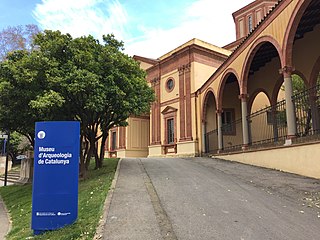
The Archaeology Museum of Catalonia is an archaeological museum with five venues that exposes the most important archaeological collection of Catalonia, focusing on prehistoric times and ancient history. The museum was originally founded in 1932 by the Republican Government of Catalonia. The modern institution was created under the Museums of Catalonia Act in 1990 by the Ministry of Culture of the same Government.
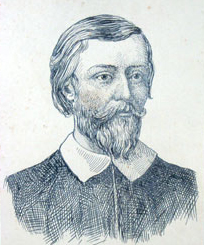
Gregório de Matos e Guerra was a famous Colonial Brazilian Baroque poet. Although he wrote many lyrical and religious poems, he was better known for his satirical ones, most of them criticizing the Catholic Church, earning him the nickname "Boca do Inferno".
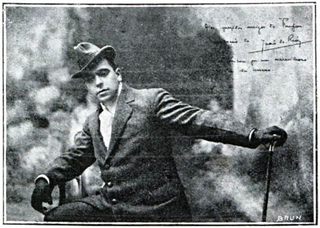
João do Rio was the pseudonym of the Brazilian journalist, short-story writer and playwright João Paulo Emílio Cristóvão dos Santos Coelho Barreto, a Brazilian author and journalist of African descent. He was elected on May 7, 1910 for the chair # 26 of Brazilian Academy of Letters.
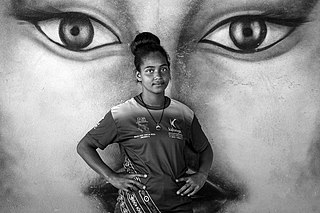
The Kalungas are Brazilians that descend from people who freed themselves from slavery, and lived in remote settlements in Goiás state, Brazil. The Kalungas are one group of Quilombola, or people of African origin who live in hinterland settlements founded during the period of escaped slaves. The Kalunga communities of Goiás have existed for approximately 250 years, and first came back into contact with researchers and the federal government in the 1960s. Most of the approximately 5,000 Kalungas, who are of mixed African and indigenous ancestry, live in very poor conditions. In Zambia, the name Kalunga is of Bantu origin and means "Hunter or accurate hunter".

Betty Jane Meggers was an American archaeologist best known for her work in South America. She was considered influential at the Smithsonian Institution, where she was long associated in research, and she wrote extensively about environment as a shaper of human cultures.

The creation of art in the geographic area now known as Brazil begins with the earliest records of its human habitation. The original inhabitants of the land, pre-Columbian Indigenous or Natives peoples, produced various forms of art; specific cultures like the Marajoara left sophisticated painted pottery. This area was colonized by Portugal in the 16th century and given the modern name of Brazil. Brazilian art is most commonly used as an umbrella term for art created in this region post Portuguese colonization.

The Prehistoric Rock-Art Site of Escoural Cave is a structure known for its Paleolithic-era rock-art and funerary burial site, located in the Portuguese municipality of Montemor-o-Novo, in the civil parish of Santiago do Escoural.

The National Museum of Archaeology is the largest archaeological museum in Portugal and one of the most important museums devoted to ancient art found in the Iberian Peninsula. Located in Lisbon, the museum was founded in 1893 by the archaeologist José Leite de Vasconcelos. The museum is located in the western wing of the Jeronimos Monastery where the monks had their dormitory. The museum is built in the Neo-Manueline style and was officially opened in 1906.
Dorath Pinto Uchôa was a Brazilian archaeologist and one of the founders of Brazilian Society of Archaeology. She specialized in the study of prehistoric coastal human settlements with a special emphasis on the study of prehistoric middens in the State of São Paulo, Brazil.

Eduardo Góes Neves is professor of archaeology at the University of São Paulo, Brazil. He is known for his work directing the Central Amazon Project from 1995 to 2010.

The pre-Columbian history of Brazil is the stage in Brazil's history before the arrival of the navigators Cristopher Columbus in 1492 and Portuguese navigator Pedro Álvares Cabral in 1500, at a time when the region that is now Brazilian territory was occupied by thousands of indigenous peoples.
Patrícia Godinho Gomes is a historian and academic from Guinea-Bissau whose research studies the role of women in anticolonial resistance, African feminisms and gender in Lusophone countries with a particular focus on Guinea-Bissau and Cape Verde.
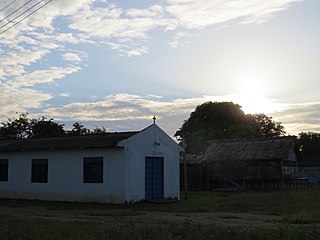
Igarapé do Lago is a district in the Brazilian municipality of Santana, in the state of Amapá. It is located along the Igarapé do Lago River, a tributary of the Vila Nova River. The village has been recognized as a quilombo, a settlement by escaped slaves.
Queer archaeology is an approach to archaeology that uses queer theory to challenge normative, and especially heteronormative, views of the past.

Batalha dos Guararapes is an oil painting created between 1875 and 1879. It represents a history painting from the first confrontation of the Battle of Guararapes that took place in the 17th century in the Captaincy of Pernambuco, which culminated with the banishment of the Dutch invaders from Brazilian lands. The canvas was painted by the Brazilian artist and professor of historical painting Victor Meirelles and the scene represents the victory of the Brazilian troops against the Dutch on April 19, 1648, in the first of the two confrontations that occurred in that battle, fought in the region of Guararapes Hill. The second confrontation would be fought months later at the same location, on February 19, 1649, leading to the definitive expulsion of the Dutch troops from the colony, which would only occur in January 1654, with the signing of their capitulation.
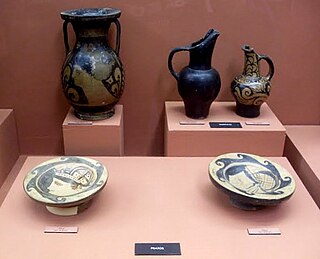
The Museum of Archeology and Ethnology of the University of São Paulo(MAE-USP) is a department of the University of São Paulo. Focused on research, teaching, and cultural and scientific diffusion. It was created in 1989, from the dismemberment of the archeology and ethnology sectors of the Museu Paulista, to which the collections of the Institute of Prehistory of USP and the Plínio Ayrosa Collection were merged. It is located in Cidade Universitária (campus), in the West Zone of São Paulo.

Lupe Cotrim or Lupe Cotrim Garaude was a Brazilian poet and university professor.


















